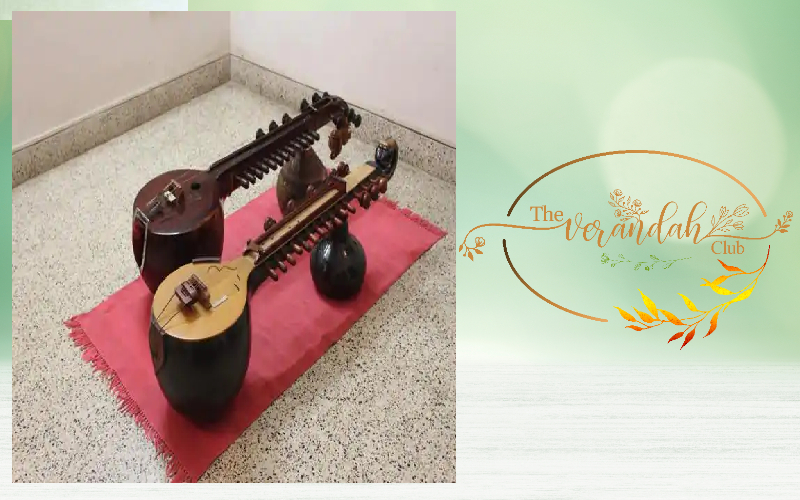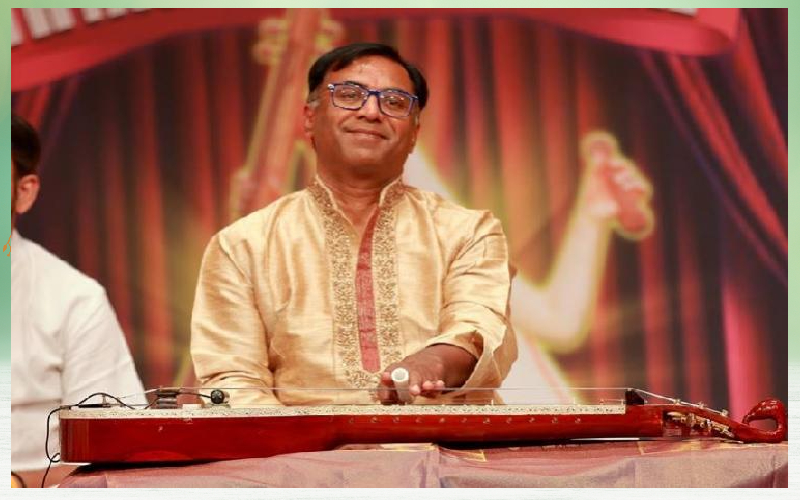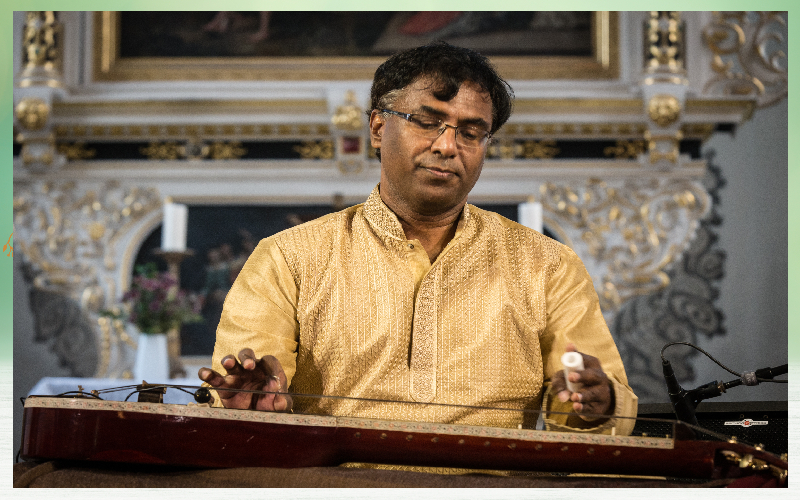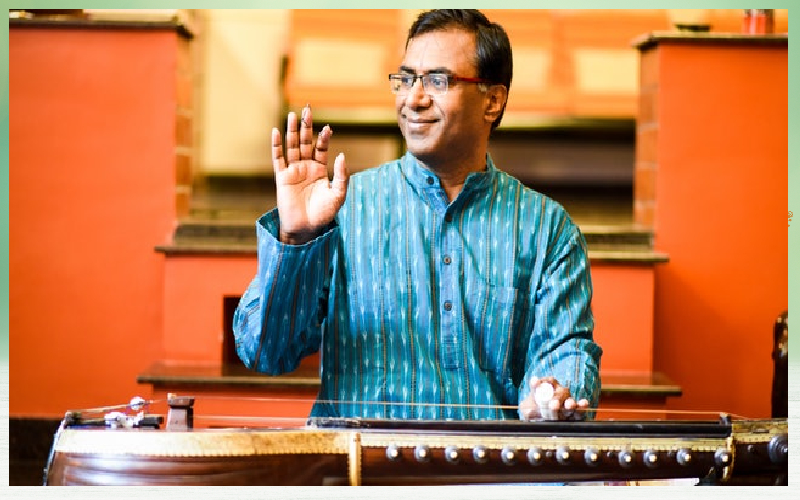The Chitravīna & The Melharmony

The Chitravīna is said to be an oldest Indian slide musical instrument and the oldest of all musical instruments in the world which dates back up to 2000 years. The forerunner of Saraswathi’s Vīna can be traced back to Chitravīna. It is well known among many people in the name of ‘Gotuvadyam’. In lucid words, it can be said to resemble a fretless lute with 21 strings which is almost similar to a ‘Vichitravīna’ of North Indian states. It is the artist, Sri. Ravi Kiran, who made it popular in India as well as abroad. He is a musically inclined person and also said to have found out the secret thread that connects various people of the word, to be music, through his varied experiences as a Chitravīna artist.
In an attempt to twine the East and the West through music, he created a special genre called ‘Melharmony’. It was a new system of music to the extent that it explores very different chords and counter points than the conventional classical methods do. In Indian music, only one note was heard at a time and it was all played successively. Any system which used notes in succession is called a melodic. In western music, when a chord was played, two or three notes was heard together simultaneously. On watching a pianist, one could surely observe that this method being practiced. This method was called a polyphony.

Around 1200 A. D. the westerns started experimenting with polyphony, where one vocalist would sing one thing, another vocalist would sing the same thing with 2 or 3 notes above that. Hence, they started experimenting and checking for its outcome. It was around 1700’s that this polyphony became so organized. There evolved a rule as to what notes should be heard simultaneously and that was called chords. These kinds of rules started emerging for western music which made it more harmonious.
The rules of harmony were very different from that of the melodic system of music. Harmony worked in way that only certain combinations made sense and the melodic method was based on scales, Rāgās, and the typical ornamentations that was followed in Carnatic which again dated their origins back to the Tamil puns. Therefore, he had to face many challenges in creating the new wave of music which was the result of hybridization of melodic and harmonic systems of music.
The artist said, “I created this genre around the year 2000. It was also the year of ‘Millennium Festival’. We, other musicians and I, had a concert on October 2000. It was a part of the festival when I collaborated with BBC philharmonic orchestra. Our performance was in fact rated among the top 5 in the whole world. Thereafter, we had been organizing many ‘Melharmony’ concerts. Even recently we had organized a ‘Melharmony’ festival through which we were trying to raise funds for the artists who were affected by COVID-19."
(Those who would like to listen to these global celebrities like 4-time Grammy winner Glen Velez, Loire Cotler, Jordan Rudess, Ed Matthew, K V Prasad along with Ravikiran in the Melharmony concert for the Musicians Covid Relief Fund can access it at:
https://vimeo.com/ondemand/ravikiranmusic)

The Chitravīna musician had played several fusion concerts during 1980’s. At that time, he used to work with Jazz musicians, Blues musicians, pop singers, Iranian musicians, Chinese artists, and various other different artists including South Americans. Although he was absolutely charmed by any good system of music, the brilliance of Carnatic music awestruck him and made him realize its greatness. It could be said with absolute conviction that strong Carnatic grounding which gave him the ability to collaborate with almost anybody in the world.
“In many ways, it can be said that Carnatic music is the mother of all arts. Melodically, after having collaborated with so many systems I can say honestly that that Carnatic is the most melodically complete system in the whole world. This is not an emotional statement but an intellectual statement. What was happening in these collaborations is that I could adapt to them very easily whereas they would find it challenging to adapt to me. Because Carnatic gave me this power but their systems did not empower them so much that they could adapt to Carnatic very fast,” Sri. Ravi Kiran said proudly.

In the first event that he did it with BBC he had included a Thyagaraja composition of Sapthaswara along with his short new composition which became an instantaneous hit. In the due course of time, they had much more serious collaborations with several talented hand-picked artists. Subsequently, they were able to do much better concerts with ‘Melharmony’ through which they did justice to both Indian and western classicals. Melharmony was the means which empowered them to do little better.
“There is a best western composer called Robert Morris, who got interested in ‘Melharmony’. He is from the Eastman School of Music in New York. He himself is predominantly a western composer who is also interested in Indian music. He is a legend in the Western world, and he attended my concert once. His knowledge of Carnatic is tremendous. He knows so many Rāgas and can demonstrate them.
He got involved in ‘Melharmony’ and then we started communicating. He developed ‘Melharmony’ from the Western standpoint. So, lot of credits should also go to Robert Morris, coming out with a lot of Western theoretical aspects of ‘Melharmony’. In the recent ‘Melharmony Festival’ he spoke about Muthuswamy Deekshithar and Beethoven both of them,” said the humble Indian artist.
In these ways, the Chitravīna and the ‘Melharmony’ artist created the Indianized version of Western music or it could be said in other ways, harmonization of Indian Rāgas. Our ancient musical slide instrument had now gathered attention of the world and had made Indians proud, as well feel for not learning our own past. Through the modern picks of the ancient strings, Chitravīna reverberated the best music which the world has ever heard in the history of Eastern or Western music. https://vimeo.com/ondemand/ravikiranmusic
NEXT ARTICLE